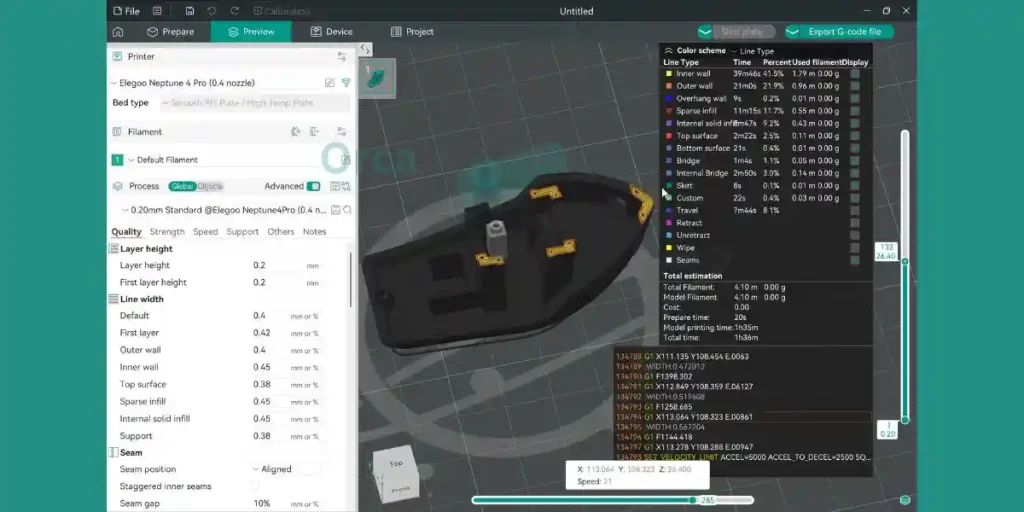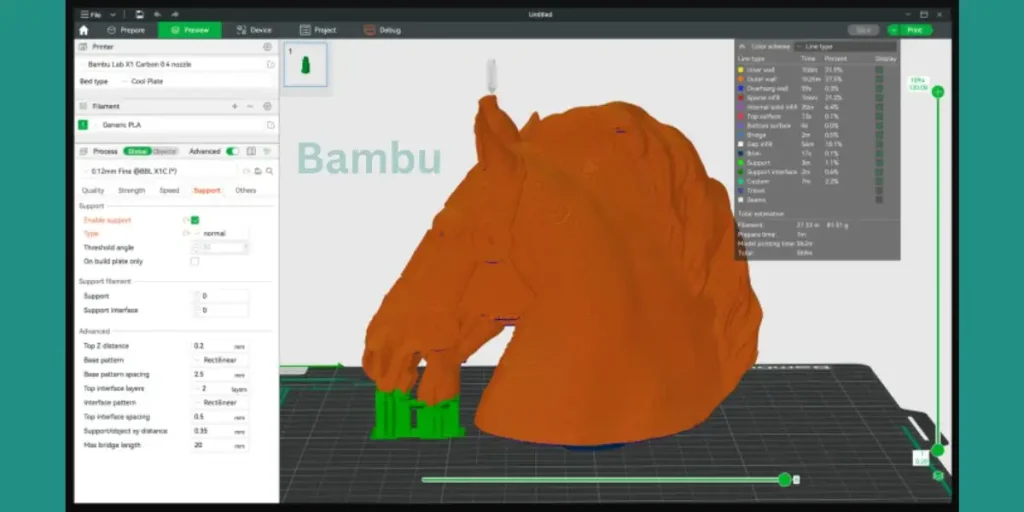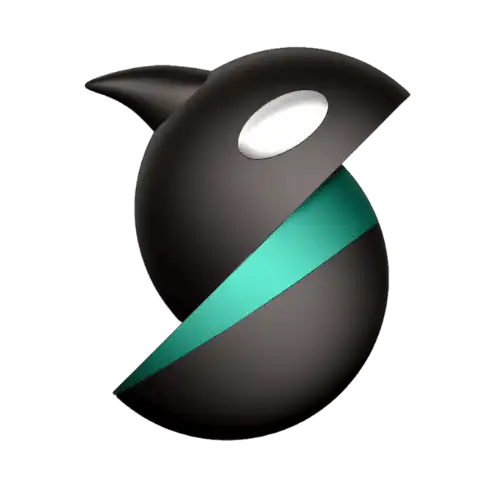Orca Slicer vs. Bambu Studio – Detailed Comparison
The final result of 3D printing does not happen by chance, however, it depends on hundreds of factors. All these factors work together to make your 3D print out of this world. One such factor is the use of slicing software.
| Feature | Orca Slicer | Bambu Studio |
|---|---|---|
| Open Source | Yes | No |
| Supports Multiple Printer Brands | Yes (Bambu, Prusa, Creality, etc.) | Only Bambu printers |
| Advanced Tree Supports | Yes (faster & easier removal) | No |
| Faster Update Cycle | Yes (community-driven) | Slower (controlled releases) |
| Built-in Calibration Tools | Yes (including flow & pressure advance) | Limited |
| User Interface | Modern & customizable | Clean but basic |
| Community Support | Strong GitHub & Discord communities | Official support mainly |
| Custom G-code Scripts | Yes | Limited |
| Multi-material Printing | Yes (including AMS support) | Yes (AMS only) |
| Ideal For Beginners | Yes | Yes |
Choosing the right slicing software for your 3D prints will bring magical effects for you. Among the famous software, we have Orca Slicer and Bambu Studio. Each of these slicer tools offers unique and amazing features that will suit your needs.
What is the Orca Slicer?
Before hopping on to the comparison between OrcaSlicer and Bambu Studio, I thought having a brief introduction would be a good idea. So, my friend! OrcaSlicer is an amazing and powerful slicing software that helps in the 3D printing process.
However, it was designed specifically for Orca 3D printers, but it also works perfectly fine with other printer models. Wondering how it works? So, it takes the 3D models in the STL, OBJ, or 3MF format and then translates them into G-Code. This g-Code is the language that printers can understand and execute prints according to it.

Key Features of Orca
- Extensive Printers profile
- Fine-tuning option
- Multi-material printing support
- Regular software updates
- Built-in calibration tool
What is Bambu Studio?

Bambu Studio is also a slicing software, just like Orca. But it offers some more complex features. Let’s first have an introduction to it: it is a free, open-source 3D printing slicing software, and it helps to create 3D models.
It was developed by Bmbu Labs and designed primarily for use on Bambu Lab 3D printers. This amazing software has a simple user interface along with a variety of advanced professional-level features.
It supports AMS (Automatic Material System), which allows you to easily switch material during the printing process.
Key Features of Bambu Studio
- Optimized for Bambu Labs X1 Carbon series
- Contains Project-based workflow
- Enhanced slicing algorithm
- Built-in cloud integration
Orca Slicer vs Bambu Studio
To help you find the best slicing software for you, here is a detailed comparison between the OrcaSlicer and Bambu Studio. After reading these features, you will be able to choose the tool that will suit your needs.
User Interface
OrcaSlicer is the best choice for individuals who are just starting with 3D printing. It is because its simple and intuitive interface makes it easy to use for all beginners. When you open this software, you will find a clean layout with clear sections.
The main menu is given on the top from where you can select the main option. On the left side, setting options will be given. The panel on the left side contains both basic and advanced editing options.
On the other hand, the Bambu Studio has a somewhat modern interface, which some beginners may find difficult to understand. The advanced features in the Bmbu slicer include real-time print monitoring and material management via AMS.
These features make it highly suitable for all professionals. Moreover, the cloud integration makes Bambu Studio superior to OrcaSlicer.
Printer Compatibility
When it comes to checking for printer compatibility, I found that Orca Slicer is winning this competition. Want to know how? OrcaSlicer is compatible with a wide range of 3D printers.
However, it was designed mainly for Orca 3D printers, but it also offers to add custom printer profiles. By adding a custom printer profile, you can improve your 3D printing experience. OrcaSlicer works well with hundreds of printer brands.
Bambu Studio is also designed for a specific printer, such as Bambu Labs printers like the X1 Carbon. But, just like the Orca tool, it also supports custom printer profiles. However, the Bambu Studio has special features and options for Bambu Lab printers, which can bring better results in your 3D prints.
Therefore, OrcaSlicer wins at this point, as it offers better working with other custom printer profiles, whereas Bambu Studio has tight integration with Bambu lab devices.
Multi-material and Color Printing
Both of these amazing slicing tools offer an option for multi-color and material printing. But do you want to know which slicer tool won? S, here is an answer for you.
Orca slicer offers an amazing option for multi-material and color painting. But, my friend! Its multi-material printing is limited as compared to other advanced slicer tools. Users have to configure the multi-material printing process manually.
However, Bambu Studio is an expert in Multi-material and multi-color printing. All credit goes to its AMS system. The results become even better when combined with the Bambu Lab printers.
The AMS system helps to switch printing material during the printing process automatically. It can handle four materials at a time, which allows users to print more complex color schemes.
Cloud Integration and Monitoring
If you want to enjoy some advanced features in your printing process, like cloud integration and monitoring, then Bambu Studio should be your first option. This is because this slicer software offers Bambu cloud integration. With these features, you can have real-time print monitoring and remote file management.
The process of remote project management, handling, and alteration has become a lot easier with the help of cloud integration. On the other hand, OrcaSlicer does not have this cloud storage option. Users have to monitor and control the printing process through the software interface manually.
Pricing Plan
You will be happy to know that both of these slicing software come for free. So, you don’t have to purchase any paid plan to access the amazing features of these software programs.
Orca Slicer is free and open-source software that works best with a variety of printers. Moreover, it also offers flexibility by offering a custom printer profile option.
Bambu Studio is also free to use; however, to use some of its advanced cloud storage options, you may need to buy a subscription plan. Also check some orca main advantages.
